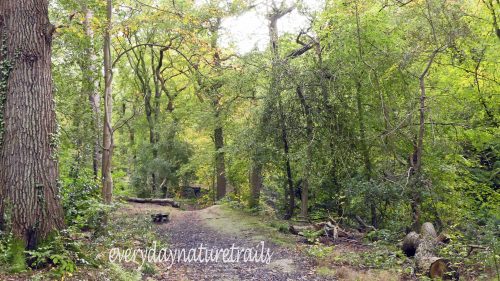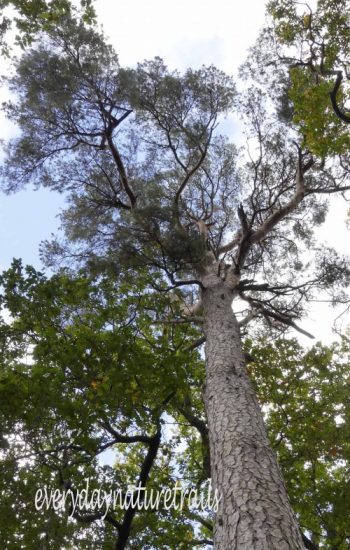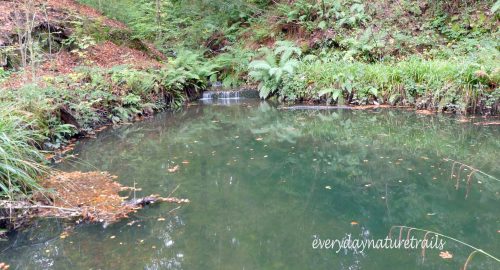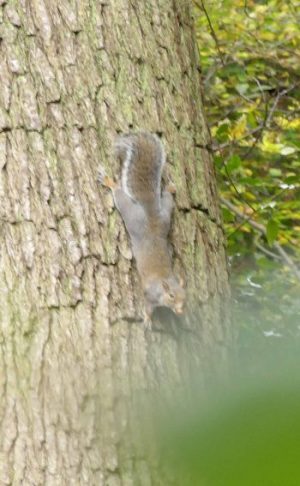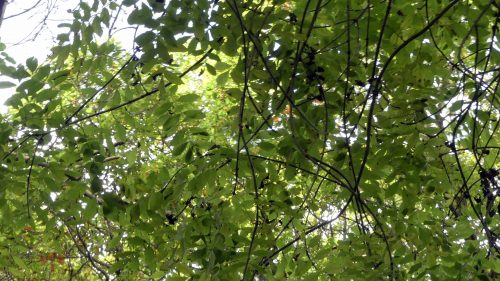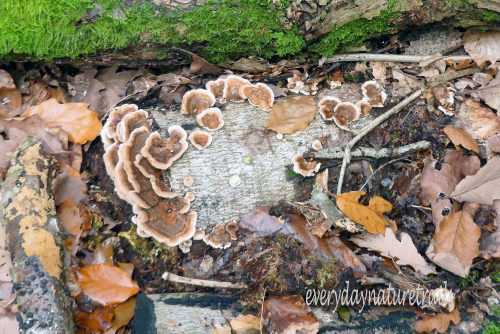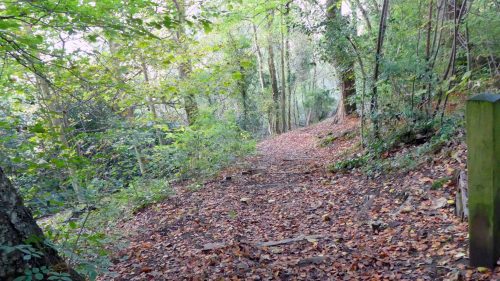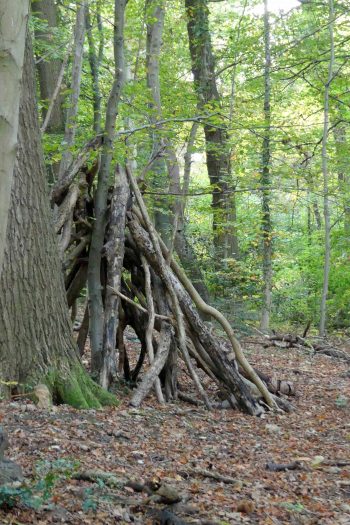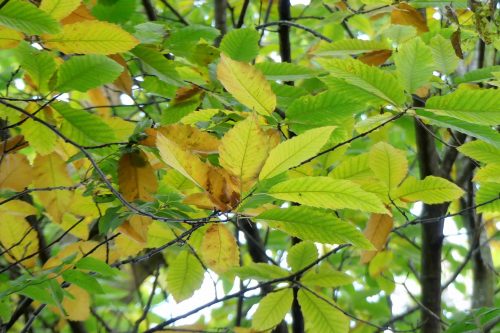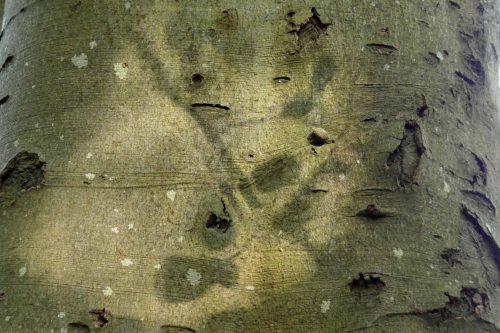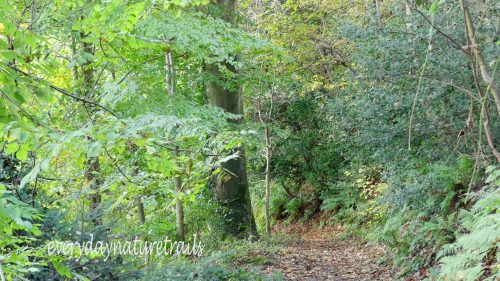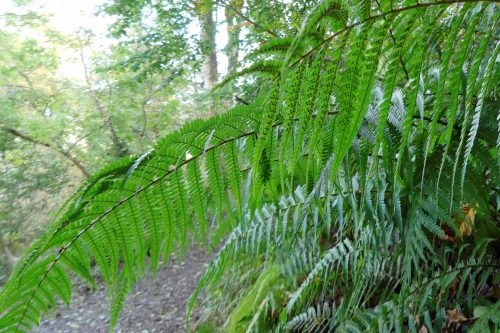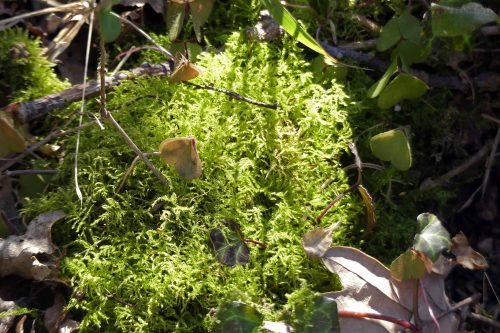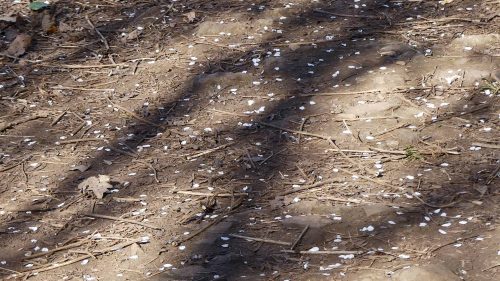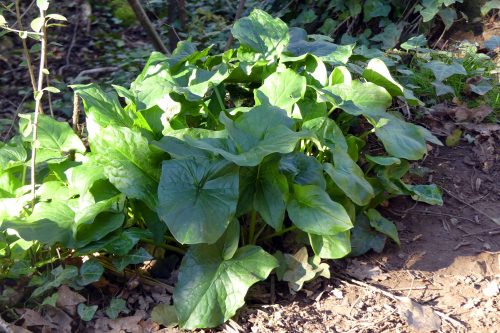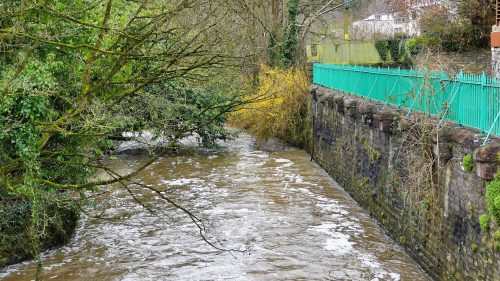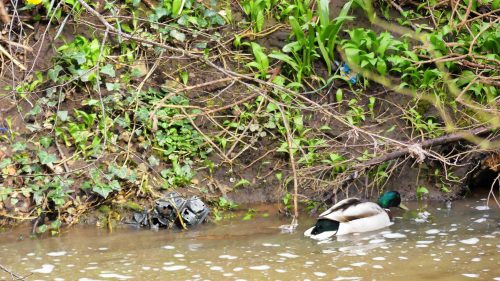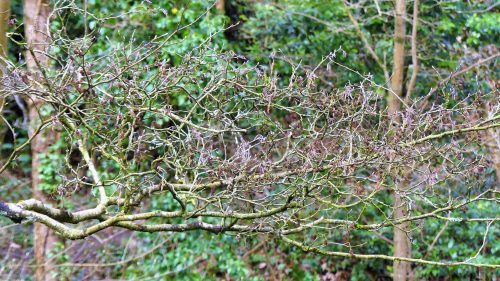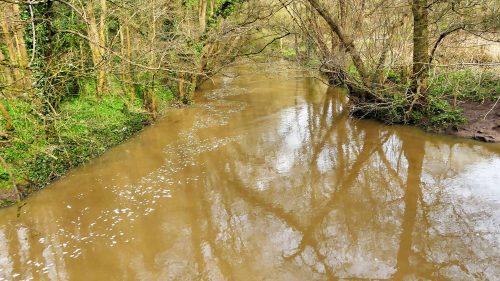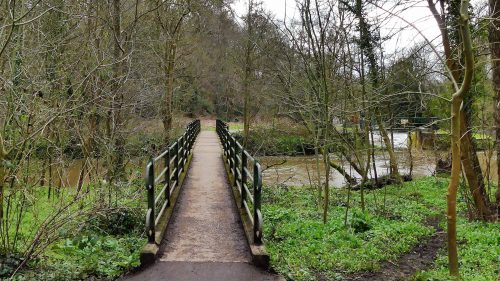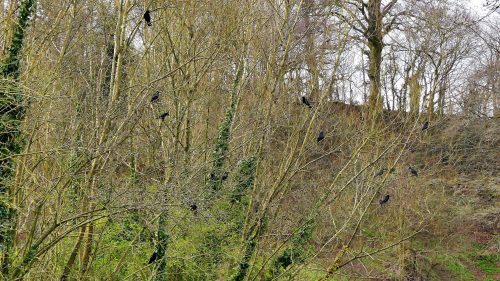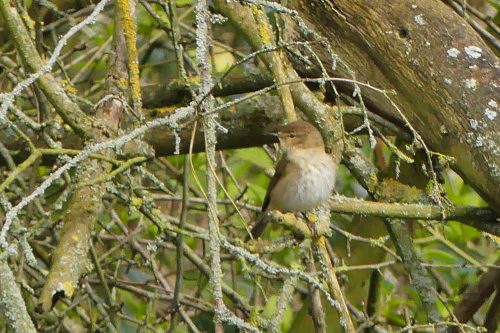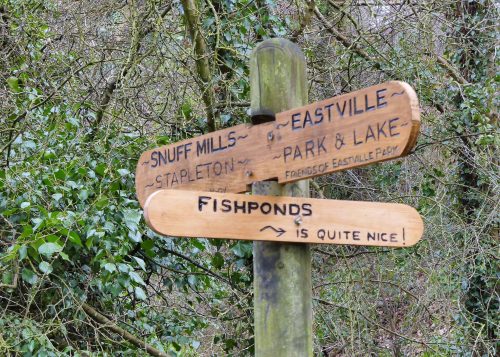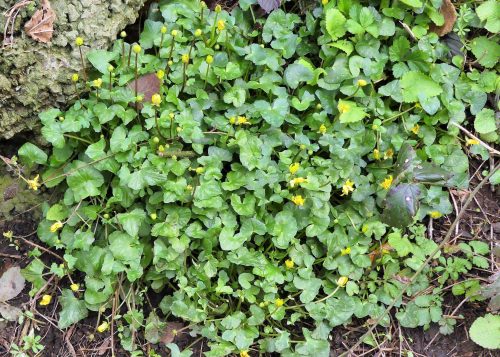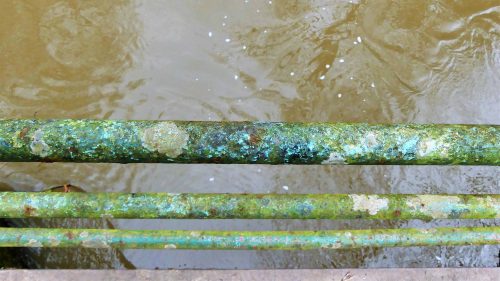The woodland of Pwllycrochan makes up much of the treescape that forms the beautiful and seasonally changing backdrop to the town of Colwyn Bay. Deceptively small in area, this woodland is long and narrow, surrounded and divided by roads into three islands that together occupy just 21 hectares of land. But what this remnant of ancient woodland lacks in ground area is made up for by the height and grandeur of the beautiful old trees that occupy it. Aged Oaks, Ash and Beech trees soar majestically into the sky, some so tall it’s almost impossible to see their crowns without craning back your neck as far as you can.
This has become one of my favourite places for a wander at any time of the year, but I think Autumn is the perfect time to appreciate the true owners of this woodland: the amazing trees that grow there.
Much of the original woodland that was once the formal parkland of the Pwllycrochan Estate is gone, but a good number of its beautiful old trees still stand, lending grandeur to the roadsides of this west end of Colwyn Bay. A formally clipped yew hedge marks the boundary between the school playing field and Pwllycrochan Avenue and just behind stands a glorious spreading Sweet Chestnut tree. The leaves remaining on the tree are slowly turning colour. Many have already fallen, no doubt assisted by recent high winds and heavy rain and the pavement beneath is covered with russet-coloured leaves, prickly seed-cases and scattered nuts. Rounding the bend a little further up the sloping road, a sight that I remember took me by surprise the first time I saw it: a tree has been left to grow on a small island in the middle of the road. This is an old Strawberry tree, an exotic survivor from the past glory days of the aforementioned Estate.
Rounding the bend a little further up the sloping road, a sight that I remember took me by surprise the first time I saw it: a tree has been left to grow on a small island in the middle of the road. This is an old Strawberry tree, an exotic survivor from the past glory days of the aforementioned Estate.
Inside the woods it was peaceful and still. For a brief moment nothing moved. Not a breath of air stirred the leaves. There were no road sounds, no trampling chatting people or dogs, no bird sounds, not even a scurrying squirrel. Perfect peace.
The moment was fleeting, soon broken by a lady walking with her dog, but much appreciated. I wandered a bit further along the path, looking out for fungi. I wondered whether it was a bit late in the season for finding anything, but this has been a good place for them in the past and inspired by our recent foray I was hopeful. Checking a woodpile at the side of the path I found some bracket fungi, some pieces had grown quite large and gone woody. It was faded too, but the largest piece was a pretty scallop shape and there was some darker banding still visible, so it may be Turkey tail, but does it grow that big?
The ancient trees stand tall and straight like sentinels on guard. Each stands alone, reaching the high canopy without need to bend or twist to avoid touching another. Most have lost, or at some time in the past, had their lower branches removed.
As a managed wood historically, that may be for one of several reasons. Timber was, and is a valuable commodity. As building material for houses or ships and boats, long lengths of straight wood are desirable, so lower branches may be deliberately removed, particularly from Oak trees, for that reason. The woodland would have been managed for game too, birds such as pheasants would have been introduced and shrubs planted between the trees to give them cover, again requiring the removal of low branches to allow sunlight to reach them.
 If I hadn’t seen a scattering of small cones on the ground I may have missed the Scots Pine tree they had fallen from, despite the fact that its trunk was almost in front of my eyes. It towered so high into the sky I had to crank my neck back almost painfully to see its few remaining branches way up in the canopy. I find it incredible to think this giant had grown from a tiny seed once encased within a tiny cone such as this.
If I hadn’t seen a scattering of small cones on the ground I may have missed the Scots Pine tree they had fallen from, despite the fact that its trunk was almost in front of my eyes. It towered so high into the sky I had to crank my neck back almost painfully to see its few remaining branches way up in the canopy. I find it incredible to think this giant had grown from a tiny seed once encased within a tiny cone such as this.
There’s something quite magical about a woodland stream and this wood has two that flow down through deep dingles. The sound of this one was clearly audible some distance away; its sound would have been amplified by the rocky walls either side of it, but recent heavy rains have given it power and volume and it tumbled and fell rapidly down the rocky cliff quite dramatically.
Heading towards the pool that gives the woodland its name, the track passes by this tall elegant Oak tree, elevated further by the raised bank it grows from. It is holding firm despite the soil around its roots having been much eroded. It’s mostly Sessile Oaks that grow here, but the only ways I know to tell them apart from the English Oak is that the Sessile’s acorns are stalkless and the leaves have longer stalks. The leafy parts of this tree were way too high to tell and I think by now squirrels and Jays would have made off with any acorns there may have been.
 On the shaded path below the tree, at the bottom of the bank, a layer of coppery dry leaves merges with bright green moss.
On the shaded path below the tree, at the bottom of the bank, a layer of coppery dry leaves merges with bright green moss.
 I stood on the bridge crossing the narrow exit end of the pool as I always do, trying to imagine how it may once have been. Pwll is the Welsh word for pool and crochan translates as cauldron. It is said that once the stream flowing into the pool was once much more powerful, causing the water in it to bubble and froth as it would in a boiling pot. I’m ever hopeful that one day the water might at least look a little more animated, especially after a period of heavy rain. But we’ve had that lately and the pool is well-filled, so I imagine changes or diversions of the stream along its course are the reason for the reduction in its force, so it’s unlikely it will.
I stood on the bridge crossing the narrow exit end of the pool as I always do, trying to imagine how it may once have been. Pwll is the Welsh word for pool and crochan translates as cauldron. It is said that once the stream flowing into the pool was once much more powerful, causing the water in it to bubble and froth as it would in a boiling pot. I’m ever hopeful that one day the water might at least look a little more animated, especially after a period of heavy rain. But we’ve had that lately and the pool is well-filled, so I imagine changes or diversions of the stream along its course are the reason for the reduction in its force, so it’s unlikely it will.
Retracing my steps I spotted movement on a tree trunk some distance ahead. Although half-hidden by the vegetation in front of me, the squirrel that was running vertically down from a great height must have spotted me in the same moment and had frozen still, an acorn wedged firmly between its teeth.
There are some beautiful ferns here, whose fronds gracefully arch out over the paths. This one has ripening sori (seeds) on the back of its fronds and from their shape I believe this is a Scaly Male Fern.
 Shallow steps wind their way up to a path on higher ground.
Shallow steps wind their way up to a path on higher ground.
From that higher path there is a view looking down onto the pool showing where the water flows on under the bridge. Some of the water exits naturally as a stream, but some is diverted via pipes from which water pours rather inelegantly.
From a coppery sea of dry leaves rose a small bright green island of moss. Close up this particular moss always makes me think of miniature pine trees. Moss identification is not a strong point of mine, but I think this is a Haircap species.
This trail continues upwards till it meets the road. A magnificent Ash tree stands at the edge of the path here. Each time I see an Ash, especially one such as this, I can’t help but think what a tragedy it would be if it were to be targeted by the dreaded Ash die-back disease. Fingers crossed, but at this time it looks strong and healthy
and as ash are often amongst the last to put out their leaves in the Spring, its leaves are still mostly green.
Not wanting to leave the wood here I turned around to walk back downhill. A fly basked in sunlight on a fern frond. Just a Housefly, but I was oddly pleased to see it, especially on a chilly day. Is it just me, or does anyone else think there have been less of them around this year?Bluebottles and Greenbottles have been quite numerous, and I’ve seen the smaller Lesser Houseflies, but not the bigger ones that usually annoyingly invade the house.
Almost hidden behind a larger tree, I would have missed this Rowan if its yellow leaves and scarlet berries hadn’t caught my eye. I wondered if it was deliberately planted or was a gift from a passing bird.
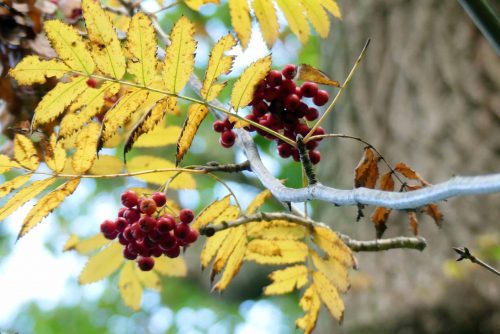 There are a few small Christmas-tree shaped pines in odd places throughout the wood too. This one, very close to the base of another tree surely wasn’t planted there intentionally. I wonder if it’s sprung from a Scots Pine cone buried by a squirrel.
There are a few small Christmas-tree shaped pines in odd places throughout the wood too. This one, very close to the base of another tree surely wasn’t planted there intentionally. I wonder if it’s sprung from a Scots Pine cone buried by a squirrel.
By the side of the path a number of wasps were flying in and out of a space in a pile of Birch logs. Focussing on the wasps I didn’t notice the colony of rounded charred-looking fungi they were flying past until I looked at my photographs. This is one I recognise as King Alfred’s Cakes, memorably named for the incident which is surely one piece of history many of us, including the person that named the fungus, remember from school history lessons. In case not, legend has it that King Alfred the Great (849-899), whilst King of Wessex, sought refuge from Vikings (886) in the cottage of a peasant woman. In return for her hospitality, she charged him with looking after her cakes (small loaves of bread) that were baking on the stove. He supposedly fell asleep, or maybe became distracted worrying about his Kingdom, and let them burn. Unaware of who he was, she apparently gave him a good telling-off. The fungus then is named after those burnt cakes. Tenuous, but memorable.
On the theme of burning, further on is another woodpile, fortunately in a clearing, which someone had clearly set fire to at some point, leaving many of the logs charred black.
 Despite the damage to some of the logs I found some interesting fungi here including a nice fresh collection of Turkey tail, or Many-Zoned Polypore as it is also known
Despite the damage to some of the logs I found some interesting fungi here including a nice fresh collection of Turkey tail, or Many-Zoned Polypore as it is also known
Strangely beautiful, I found Candlesnuff fungus growing through feathery green moss.
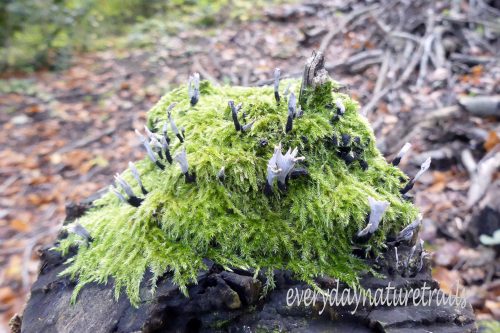 Venturing beyond the log pile along a track that comes to a sudden end – a rather sinister scene came into view: a tree that has been decapitated, its trunk left standing tall. Clearly rotting and bark peeling away, the trunk is blackened by a sooty ooze and is pierced with thousands of tiny holes. Large brackets of woody fungi project from the trunk; they too are blackened.
Venturing beyond the log pile along a track that comes to a sudden end – a rather sinister scene came into view: a tree that has been decapitated, its trunk left standing tall. Clearly rotting and bark peeling away, the trunk is blackened by a sooty ooze and is pierced with thousands of tiny holes. Large brackets of woody fungi project from the trunk; they too are blackened.
On a fallen log, looking like a bunch of small deflated balloons, I found a group of spent Stump Puffballs and nearby I found a few more, slightly fresher. Lycoperdon pyriforme to give it its scientific name is the only puffball species we have in Europe that regularly grows on wood.
Next to the fallen log a mushroom that looked and smelt like a Field Mushroom. Perhaps that’s what is was, but there’s no way I was going to take it home to try it.
Growing vertically from a split in a log I spotted this odd group of white fungi that to me look a lot like teeth, which I found both interesting and quite amusing: it doesn’t take much. I don’t know what it is, maybe a Coral or a Stagshorn species?
Nearby is one of the few large Horse Chestnut trees found here. I was fascinated by the patterning of its bark.
From the clearing the leaf-strewn trail is sloping and for a while the woodland has a different feel to it. It’s more open, there are noticeably less large trees and more undergrowth and ivy.
An tent-like arrangement of thin branches propped against a tree brought back memories of ‘camps’ we used to make in the woods around our home when we kids. We built similar tent frameworks, but then covered them with hessian sacks and camouflaged them with dry leaves and twigs, leaving an entrance space so we could get in and out. I can almost recall the earthy smell of damp wood and sacks as I think about it.
Growing on a branch near the edge of the path was more pretty bracket fungus. It looked similar to Turkey tail, but was more yellow-ochre-brown in colour and its upper surfaces were definitely hairy. Looking it up I’m fairly sure it is Hairy Curtain Crust, aka False Turkey-tail.
A tall Sweet Chestnut tree, its leaves turning yellow
I wandered off the path towards a grove of huge Beech trees. At least one of the trees was multi-trunked and all were mightily tall.
A shafts of sunlight had cast the shadow of the leafy tip of a branch onto one of the almost-smooth trunks
and highlighted patches of the carpet of leaves beneath the trees turning them to burnished copper.
You are on high ground here and through the trees there is a view over the edge of Colwyn Bay town and out over the Bay itself to the wind turbines.
The path begins to slope down; the ground falls steeply away on one side and is lined by a ferny bank on the other. I stopped here for a few minutes to watch a foraging party of Blue Tits, Great Tits and Long-tailed Tits, a few of the latter had come down into the Holly tree in the photograph and stayed within in it for a good few minutes. Other than Wood Pigeons, these were the only birds I saw while I was here.
The Holly had a good crop of berries, which you may interpret to be a warning of a harsh winter to come, or an indication of a good Spring past with rain and sunshine that brought forth plenty of flowers. Maybe both, we’ll soon see.
 Enormous ferns arching of the path lend a lush, almost jungly feel to this last part of the path.
Enormous ferns arching of the path lend a lush, almost jungly feel to this last part of the path.
This Trail through the woodland comes to an abrupt end and brings you out onto the Old Highway, a short distance down from the entrance to the woods. Another path, raised above road level and parallel to the road takes you back there along the woodland edge, so you don’t have to walk on the road itself. The vegetation along the path is quite varied and I found an eclectic collection of plants still in bloom or bearing fruit. Flowers surprisingly included those at the tip of a very late Foxglove, Herb Robert and a Hogweed. I spotted Wild Raspberries still ripening, a few Blackberries and more Holly berries.
I’d collected a fair few items of rubbish along my walk and reaching in beneath a bramble to pick up a drinks can I was rewarded with my best fungus specimen of the day; although I don’t yet know its identity.
Then I caught sight of this old sign, now high up above eye level, nailed to the trunk of a large Sycamore tree. The Districts of Colwyn and Aberconwy merged to form Conwy Borough Council in 1996, so it’s at least that old, I would guess at quite a bit older again.
 Ending as I began, a length of this path too is strewn with leaves and seed cases from a Sweet Chestnut tree.
Ending as I began, a length of this path too is strewn with leaves and seed cases from a Sweet Chestnut tree.
More details about Pwllycrochan, including location here.



